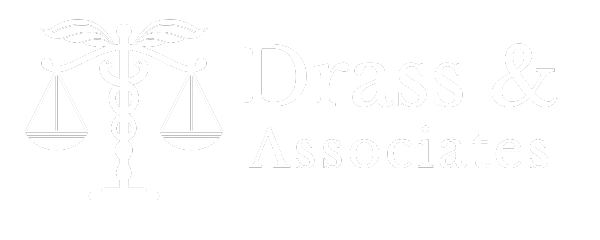📰 As I discuss in my article, “Kindness, Equity, and the Mental Health Crisis: The View from this Nurse’s Window” (https://drassassociates.com/kindness-equity-and-the-mental-health-crisis-the-view-from-this-nurses-window/), the mental health challenges left in the wake of the pandemic, coupled with the social and political turmoil that continues in the United States is contributing to an increase in fatal outcomes related to violence, overdose, and suicide. 🪟
📈 Understanding the scope of suicide:
- Globally: Over 700,000 people die by suicide each year, making it the 4th leading cause of death among young people (15-29 years old).
- United States: An average of 132 Americans die by suicide each day, totaling over 47,000 deaths annually.
- Demographics: Suicide rates are higher among men, individuals aged 45-64, and certain minority groups. However, suicide can affect anyone regardless of age, gender, or background. 🚨
😷 Suicide Rates Post-Pandemic: An Uncertain Landscape
🧑💻 The COVID-19 pandemic has undoubtedly impacted global mental health, raising concerns about potential increases in suicide rates. While it’s too early for definitive conclusions, initial data suggests a complex picture:
Global:
- Limited data: Information on suicide rates across the world is still emerging, making comprehensive analysis challenging.
- Varied trends: Early reports indicate different experiences in different regions. Some countries witnessed surges, while others observed declines or no significant changes.
- Disparities: Vulnerable groups, including youth, frontline workers, and individuals with pre-existing mental health issues, appear particularly susceptible to increased suicidal ideation and attempts.
United States:
- Initial concerns: Early estimates suggested a potential rise in suicide rates, particularly among teenagers.
- Mixed reports: Data from the CDC shows a decrease in suicide rates during the pandemic’s peak, but concerns remain about potential long-term effects and delayed reporting.
- Focus on prevention: Increased awareness and efforts to improve access to mental health care are crucial to mitigating potential rises in suicidal deaths.
Challenges and uncertainties:
- Data limitations: Incomplete data and inconsistencies in reporting methods hamper accurate assessment of global trends.
- Social and economic factors: The pandemic’s long-term social and economic consequences, including unemployment and isolation, can contribute to suicidal behavior.
- Delayed impact: The full impact of the pandemic on mental health and suicide may not be apparent for several years.
🕊️ Moving forward:
- Investing in mental health: Strengthening mental health resources and services, particularly for vulnerable populations, is essential.
- Destigmatization: Addressing the stigma surrounding mental health and suicide is crucial to encouraging help-seeking behavior.
- Research and monitoring: Continued research and data collection are vital to understanding evolving trends and implementing effective prevention strategies.
🦺 While the full picture of suicide rates post-pandemic is still forming, it’s important to remain vigilant and prioritize initiatives that promote mental well-being and prevent suicide.
Recognizing the warning signs:
- Feeling hopeless or helpless
- Increased anxiety or agitation
- Talking or writing about death or suicide
- Withdrawing from social activities
- Engaging in reckless or risky behavior
- Changes in sleep or eating patterns
📺 Resources for help and support:
- The Lee Thompson Young Foundation (LTYF) is a non-profit organization dedicated to supporting the mental health needs of intellectually and creatively gifted youth and young adults.
- Founded in 2013 following the death of actor Lee Thompson Young by suicide, the foundation works to:
- Break the stigma and myths related to being identified as “gifted and talented.”
- Educate parents, caregivers, and school administrators about the unique mental health needs of this group of youth.
- Provide resources and support to gifted and talented youth and young adults, including:
- The Mindfulness Scholarship: Awards financial assistance and emotional support to four students entering college for the first time.
- Resources on the LTYF website, including information on mental health, suicide prevention, and navigating the educational system as a gifted student.
- Social media outreach: LTYF is active on Instagram and Facebook, sharing tips and resources for gifted youth and young adults.
If you are a gifted or talented youth or young adult struggling with your mental health, please know that you are not alone. The Lee Thompson Young Foundation is here to help.
🖥️ Additional Resources:
- The National Suicide Prevention Lifeline: 988 (available 24/7)
- The Crisis Text Line: Text HOME to 741741 (available 24/7)
- The Trevor Project: 1-866-488-7386 (available 24/7)
- The Jed Foundation: https://jedfoundation.org/
- The American Foundation for Suicide Prevention: https://afsp.org/
- The Suicide Prevention Resource Center: https://www.samhsa.gov/suicide-prevention-resource-center-sprc
- The World Health Organization: https://www.who.int/health-topics/suicide/suicide
✍️ Language matters:
📖 While the phrase “committed suicide” is still commonly used, it can be insensitive and misleading. Here’s why:
- Framing: “Committed” suggests a deliberate act with positive implications, which can be inaccurate and hurtful for grieving loved ones. Suicide is a complex issue with various contributing factors, not a conscious choice.
- Stigma: The term “commit” can reinforce the stigma surrounding suicide, perpetuating negative stereotypes and hindering open and honest conversations about mental health struggles.
- Alternatives: More accurate and sensitive alternatives exist, such as “died by suicide” or “took their own life.” These options avoid the potentially negative connotations of “committed” and focus on the tragic outcome.
- Empathy: Using respectful language demonstrates empathy and compassion towards those affected by suicide. It avoids trivializing a sensitive issue and acknowledges the pain and loss experienced by families and friends.
- Mental health awareness: Choosing sensitive language contributes to broader understanding and awareness of mental health issues. It encourages open dialogue and reduces stigma, ultimately promoting help-seeking behavior and preventing future tragedies.
Therefore, opting for alternative phrases like “died by suicide” or “took their own life” reflects a more accurate, sensitive, and respectful approach to discussing this delicate topic.
- Direct: “He died by suicide.”
- Indirect: “He took his own life.”
- Descriptive: “He died from self-inflicted injuries.”
- Euphemistic: “He passed away.”
👫 It is important to remember that you are not alone. If you or someone you know is struggling with suicidal thoughts, please reach out for help. There are many resources available to support you. 💆
🗣️Here are some additional tips for suicide prevention: 👂
- Talk openly and honestly about suicide.
- Listen without judgment.
- Encourage professional help.
- Stay connected with the person.
- Remove access to lethal means.
- Promote self-care and healthy coping mechanisms.
🤲 By working together, we can save lives and prevent suicide. 🌅
Theresa has over 30 years of experience in healthcare, mental health treatment, and administration. She is a registered nurse as well as a certified legal nurse and behavioral healthcare consultant who provides comprehensive education, assessment, evaluation, and research services to various stakeholders in the healthcare and legal fields. Ms. Drass holds master’s degrees in both Human Services and Nursing, with a focus on organizational leadership. She is certified by the American Nurses Credentialing Center as both a Psychiatric and Mental Health Nurse as well as a Nurse Executive, Advanced. Additionally, she is certified by the National Board of Certified Counselors as a National Certified Counselor and by the Certified Legal Nurse Consultant Institute as a certified legal nurse consultant. She is passionate about creating systems and empowering individuals and communities to achieve recovery, justice, and wellness. Terri is a SAMHSA peer grant reviewer, selected by the Substance Abuse and Mental Health Services Administration as a subject matter expert to evaluate grant applications and provide sound and objective recommendations for funding decisions. She is also currently a clinical consultant at The Hyer Calling Foundation, Inc., a non-profit organization that offers holistic and evidence-based programs and resources for individuals and families affected by substance use disorders and mental health conditions.[/author_info] [/author] 😢 Suicide has reemerged as a prevalent theme in our personal tribe over the last 48 hours. As we honored one anniversary, we remembered two more and learned of three others to which we are connected. 🙏
-Theresa M. Drass, MHS, MSN, RN, PMH-BC, NEA-BC, CLNC, NCC


